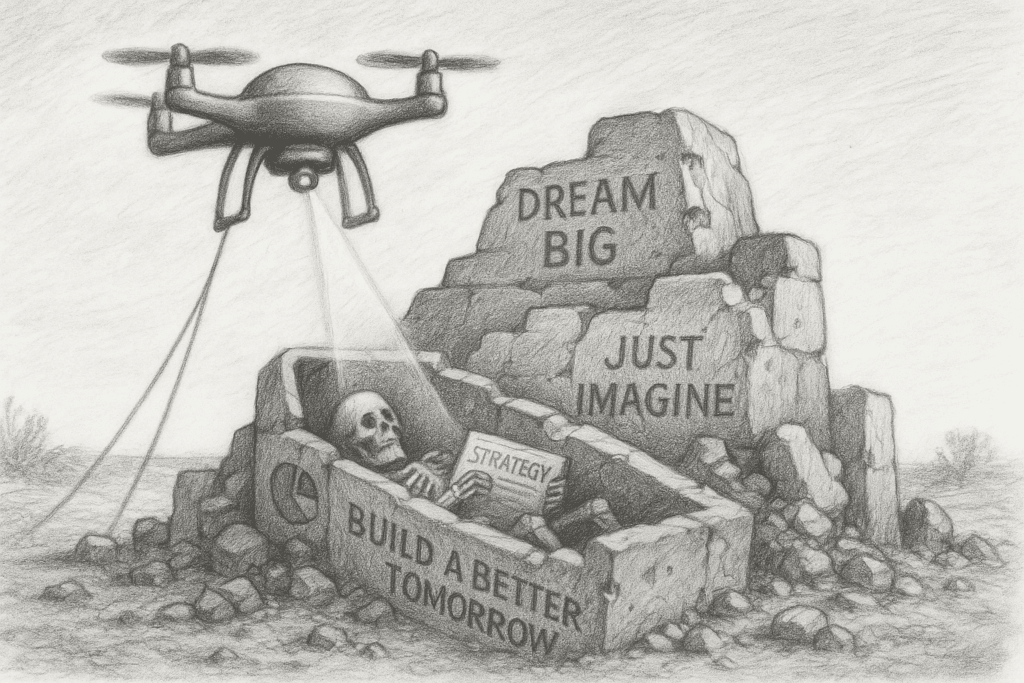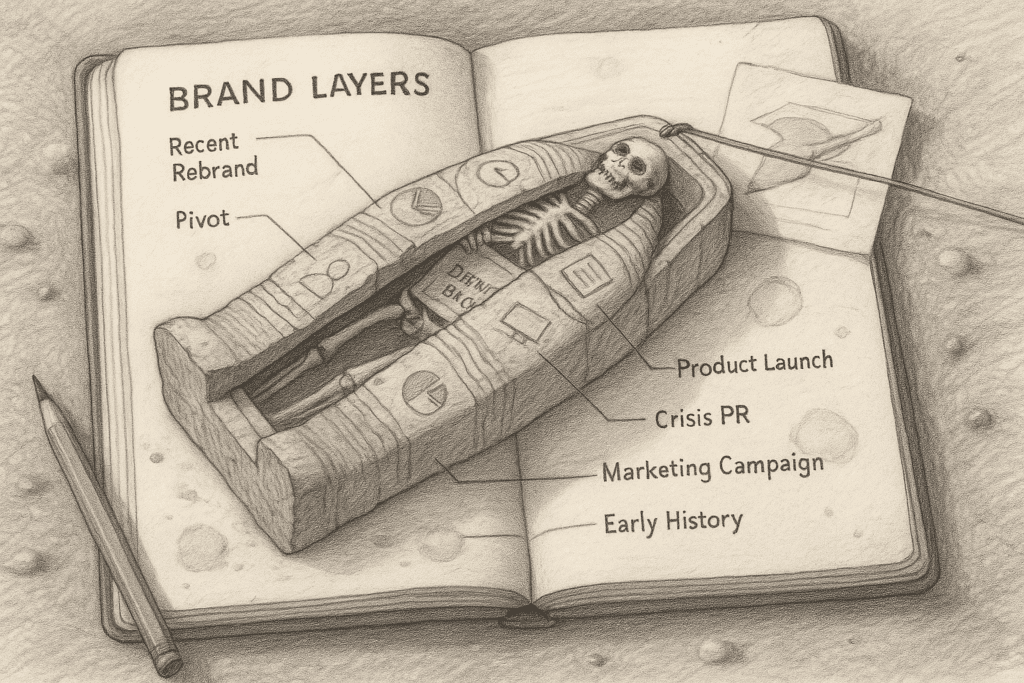Try this: Go to ChatGPT or Perplexity and ask it to compare any major company’s brand promises against their public reviews, support forums, and employee feedback. Watch how quickly it surfaces contradictions between what they claim and what they deliver.
This capability isn’t theoretical anymore. AI-driven sentiment analysis identifies emerging issues in real-time, enabling teams to address them before they escalate. Except now, those “teams” include your customers, armed with AI tools that can audit your every claim.
We’ve entered an era where AI acts as the world’s most unforgiving brand auditor, and it’s working 24/7.
What is an AI Brand Audit?
AI tools now cross-check every promise your brand makes against real-world data: customer reviews, support logs, even supply-chain records. Brands that align operations with claims will pass the AI brand audit; those that don’t face swift, public exposure.
Why AI Brand Audits Are Inevitable

For decades, brands have operated like stage magicians, directing attention to polished surfaces while hoping no one notices the chaos backstage. We’ve all done it. That mission statement gathering dust. The customer service scripts that contradict your “human-first” values. The internal processes that would horrify the customers who trust your excellence claims.
AI doesn’t respect the fourth wall.
When someone can feed your entire digital footprint into an AI and ask, “Show me where this company contradicts itself,” every compromise becomes evidence. Every shortcut becomes testimony. Every lazy decision becomes part of the permanent record.
The uncomfortable truth? AI isn’t creating these problems. It’s simply making visible what was always there—the slow accumulation of small betrayals that happens when we choose expedience over excellence.
The Compound Interest of Inconsistency
Brand decay rarely announces itself. It creeps in through seemingly reasonable decisions:
“Let’s just use last year’s messaging. Close enough.”
“The new product doesn’t quite match our quality promise, but it will be fine.”
“Our onboarding says we’re innovative, but the actual experience hasn’t been updated since 2015. But we don’t have time to fix it.”
Each compromise seems insignificant in isolation. But brands aren’t built in isolation. They’re ecosystems where every element either reinforces or undermines the whole. And AI can now map these ecosystems with ruthless precision.
I’ve started calling this the “compound interest of inconsistency.” Like financial debt, small betrayals of brand promise accumulate interest over time. The difference is that AI can calculate the total instantly and present the bill publicly.
AI search reveals how users ask about your brand, what pain points they have, and what AI says in response—valuable data for improving messaging and engagement. But it also reveals something else: every place where your messaging doesn’t match your reality.
How to Pass, Not Fail, Your AI Audit

Here’s what most brand strategists know: Your brand isn’t what you say it is. It’s the sum of every operational decision you make when you think no one’s watching.
AI is always watching.
AI tools can also be used to analyse the performance of a competitor’s campaigns and reveal their customers’ expectations. The same tools that analyze competitors can be turned on you. They can compare your careers page rhetoric with your Glassdoor reviews. They can analyze whether your “sustainability commitment” matches your supply chain choices. They can track whether your “innovation culture” produces actual innovation or just innovation theater.
This is about alignment, not perfection. The brands that will survive the AI brand audit aren’t those without flaws, but those whose flaws are honest. They’re the ones where internal reality matches external narrative, where operational choices reflect stated values, where the mundane work of Tuesday afternoon aligns with the mission statement on the website.
Small Betrayals, Big Consequences
The infrastructure for AI brand auditing is expanding rapidly. Tools now exist that can track and analyze how brands are represented across multiple AI models. These tools don’t just monitor. They expose. Every contradiction, every broken promise, every gap between claim and reality becomes searchable, analyzable, sharable.
Consider what happens when AI can instantly:
- Compare your marketing promises to customer support transcripts
- Analyze employee reviews against your “best place to work” claims
- Track whether your “innovation leadership” produces actual innovation
- Match your diversity statements to your actual hires and promotions
- Correlate your quality claims with return rates and complaints
The businesses scrambling to control their AI narrative are already too late. The evidence is already out there, encoded in millions of data points across the internet. AI just makes it impossible to hide.
Building Radical Coherence

We’re at an inflection point. Brands can either continue operating as if the old rules apply, hoping that marketing polish can compensate for operational mediocrity, or they can embrace radical coherence (Augmented Branding is one way to help get you there).
Radical coherence means your Monday morning decisions match your mission statement. It means your internal culture reflects your external brand promise. It means treating every operational choice as a brand choice, because in the age of AI, that’s exactly what it is.
The compound interest of inconsistency has been accumulating for years. AI is simply calling in the debt. The question isn’t whether you’ll be audited. It’s whether you’ll be ready when you are.
Because AI doesn’t care about your intentions. It only sees your actions. And increasingly, so do your customers.
The brands that survive won’t be those with the biggest budgets or the cleverest campaigns. They’ll be the ones brave enough to close the gap between who they claim to be and who they actually are.
In the age of AI, authenticity isn’t just a nice-to-have. It’s an existential requirement.
Amy is a brand strategist with over two decades of experience helping leaders navigate the intersection of brand integrity and technological disruption. Her work focuses on building authentic, operationally-aligned brands that can withstand scrutiny in an increasingly transparent digital landscape. Drawing from deep expertise in both traditional brand development and emerging AI technologies, Amy explores how artificial intelligence is fundamentally reshaping the relationship between brand promises and organizational reality. She writes from a conviction that lasting brand value comes from radical coherence between internal operations and external messaging.
AI Brand Audit: FAQ on Surviving AI’s Brand Scrutiny
What is an AI brand audit?
An AI brand audit uses data analysis to compare what brands say about themselves against what customers, employees, and operations actually reveal. The technology flags gaps between marketing promises and lived experiences, exposing contradictions that traditional audits might miss.
Why are AI tools exposing brand contradictions now?
AI can now instantly analyze sentiment across multiple data sources: customer reviews, employee feedback, social mentions, operational metrics. This parallel processing surfaces disconnects between brand promises and reality that were previously buried in separate silos.
How do I prepare for an AI brand audit?
Map every brand promise to specific customer touchpoints. Check: Does your “we care about sustainability” claim match your packaging choices? Does “customer-first” align with your support response times? Fix misalignments now, before AI makes them public.
Can small businesses benefit from AI brand audits?
Small businesses gain the most. Cloud-based AI tools democratize what was once enterprise-only territory, letting smaller brands build trust through proven consistency. The technology rewards authenticity over advertising spend, creating new competitive advantages for brands willing to align their promises with their practices.
What happens if my brand fails an AI audit?
A failed audit reveals existing vulnerabilities: gaps between promise and practice that already threaten credibility. Once exposed, these inconsistencies invite public scrutiny, social backlash, and conversion drops that persist until you address the documented disconnects.
